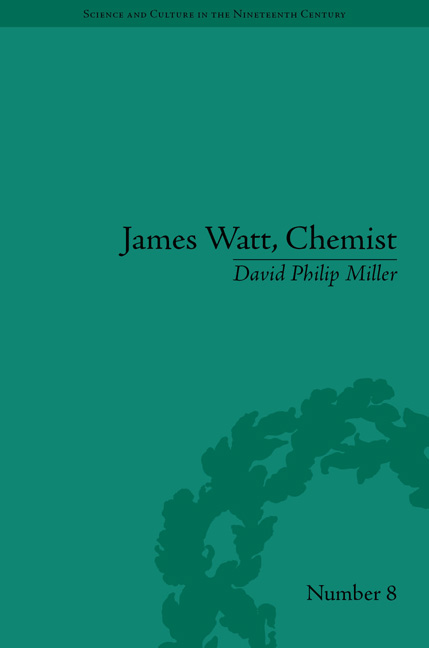Book contents
5 - The Steam Engine as Chemistry
from II - Realities
Summary
There are two ways in which the centrality of the chemistry of heat, water and steam to Watt's steam engine improvements can be discerned. One, which will be pursued later in this chapter, is to reconstruct in a technical sense – building on what we now know about Watt's chemistry – the conceptual world in which, and through which, Watt's thinking about the steam engine took place. A second is to gain an appreciation of what we might call the ‘ecology of steam’. By this I mean the broader chemical cosmology, embracing meteorology and geology, of which steam and the steam engine were a part, for Watt and his contemporaries. I start with the wider chemical picture.
The Ecology of Steam: Meteorology, Geology and The Botanic Garden
Newcomen engines are known as ‘atmospheric’ engines. This is because the drive on the piston is provided by the atmosphere working against the partial vacuum created in the cylinder by the condensation of the steam. But there was, and is, a deeper sense in which steam engines were atmospheric engines even when Watt put the steam itself to work in driving the piston. The engines were seen as trading on processes that were ubiquitous in the natural world and responsible for other atmospheric and geological phenomena. Meteorological and geological understandings were thus important to the science of heat and steam that underpinned the steam engine. Those who thought about steam and the steam engine sought, and found, coherences between phenomena in the realm of engines, meteorology and geology. Indeed, I suggest that a steam engine was sometimes thought of as a kind of local corralling of the wild forces of nature. In the twentieth century nuclear physicists sometimes spoke about the act of deploying nuclear forces to provide energy via nuclear reactors as ‘twisting the tail of the dragon’. I believe that the same sense of domesticating a wild phenomenon attended eighteenth-century steam engine technology. The steam engine in the eighteenth-century landscape was, not just aesthetically, but also ecologically, part of what went on around it.
- Type
- Chapter
- Information
- James Watt, ChemistUnderstanding the Origins of the Steam Age, pp. 125 - 146Publisher: Pickering & ChattoFirst published in: 2014



